Headlines and events archive
Displaying 1 - 50 of 362
You may also find an archive of news published in the media which are related with the Instituto de Astrofísica de Andalucía - CSIC.
Pages
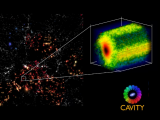
|
15/07/2024
The IAA-CSIC participates in a project that offers the scientific community three-dimensional images of 100 galaxies CAVITY is the name of this international initiative whose objective is to monitor up to 400 galaxies in the future to learn about their formation and evolution The material is now available through the website www.cavity.caha.es |
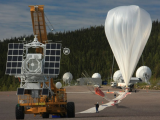
|
10/07/2024
Sunrise III successfully launched This mission has a strong participation of the Solar Physics Group of the IAA. |
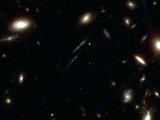
|
24/06/2024
The most distant and oldest star clusters discovered The James Webb Space Telescope observes star clusters in a galaxy just 460 million years after the Big Bang. The Instituto de Astrofísica de Andalucía (IAA-CSIC) and the Instituto de Física de Cantabria (IFCA-CSIC-UC) are participating in this discovery. |
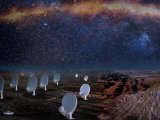
|
21/06/2024
The IAA strengthens CSIC's international role in the SKA Observatory The IAA has been endowed by the CSIC with nearly one hundred thousand euros to strengthen the capacities of the scientific community that will use SKAO through the Spanish SKA Regional Centre. "CSIC4SKA", led by the IAA-CSIC, was one of five projects funded under the CSIC Programme for Large European Research Infrastructures. |
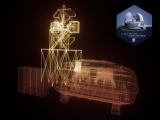
|
05/06/2024
ANDES instrument for the European Giant Telescope ELT is agreed upon The Instituto de Astrofísica de Andalucía (IAA-CSIC) participates in both its technological development and its scientific objectives. |
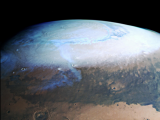
|
28/05/2024
It snows more on Mars than expected Researchers from IAA-CSIC lead a new method to measure carbon dioxide snow and frost variations on Mars surface. The initial results indicate that the deposited snow thickness is up to two orders of magnitude greater than estimated. |

|
15/05/2024
Earth-type planet found in an ultra-cool dwarf star IAA-CSIC researchers participate in the discovery of one of the few known planetary systems in this type of stars The results, published today in Nature Astronomy, have been contributed by the Sierra Nevada and Calar Alto observatories |

|
14/05/2024
Giant planet as light as cotton candy discovered The Instituto de Astrofísica de Andalucía (IAA-CSIC) is co-leading the study of the second lightest planet discovered to date. |
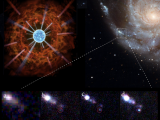
|
27/03/2024
Newly collapsed red supergiant star spotted Explosion of a supergiant star detected just one hour after its collapse. Amateur observatories have been key in detecting the supernova in its initial phases. The IAA-CSIC participates in this study published in Nature through its global network of robotic telescopes BOOTES. |
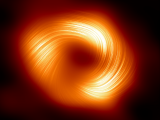
|
27/03/2024
Astronomers Unveil Strong Magnetic Fields Spiraling at the Edge of Milky Way’s Central Black Hole A new image from the Event Horizon Telescope (EHT) collaboration has uncovered strong and organized magnetic fields spiraling from the edge of the supermassive black hole Sagittarius A* (Sgr A*). |
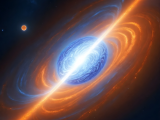
|
21/02/2024
First observation of the formation of 'rare earths' following the merger of two neutron stars A study involving the Instituto de Astrofísica de Andalucía (IAA-CSIC) shows a kilonova as a source of heavy elements, including the precious 'rare earths'. The work, published in Nature, highlights this type of explosive and extremely energetic phenomena as the ideal environment for the formation of metals heavier than iron and silver. |
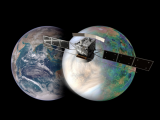
|
06/02/2024
The European Space Agency approves construction of EnVision, the next major mission to Venus The Instituto de Astrofísica de Andalucía (IAA-CSIC) participates in both its technological development and its scientific return. The mission will study Venus's core and atmosphere to understand its volcanic activity and climate and find out how this twin of Earth became so inhospitable. |
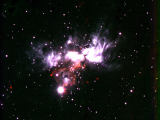
|
29/01/2024
The AFGL 5180 region, cradle of giant forming stars, reveals its secrets in the infrared The Instituto de Astrofísica de Andalucía (IAA-CSIC) leads a study that reveals, in unprecedented detail, a region of massive star formation |
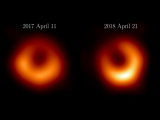
|
18/01/2024
M87* One Year Later: Proof of a persistent black hole shadow The Instituto de Astrofísica de Andalucía (IAA-CSIC) participates in the international collaboration that confirms the existence of a bright ring corresponding to the shadow of the black hole in the Messier 87 galaxy. The stability of the diameter of the ring with respect to the data obtained in 2017 supports the conclusion that the black hole M87 is correctly described by the theory of general relativity. |
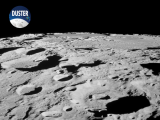
|
15/01/2024
Project DUSTER: a study of lunar dust in preparation for future exploration missions As space agencies prepare to return to the Moon, scientific and engineering teams face the challenge of mitigating a major environmental risk: dust The Institute of Astrophysics of Andalusia (IAA-CSIC) participates in the DUSTER project, which will study charged dust particles, which pose a serious risk to the health of human explorers and space instruments |
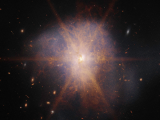
|
08/01/2024
Galaxies caught in the throes of chemical 'rejuvenation' An IAA-CSIC team leads a pioneering study that reveals the crucial role of galactic mergers in the chemical evolution of Ultraluminous Infrared Galaxies. |
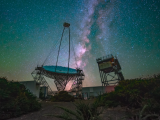
|
26/12/2023
Detected the most distant AGN observed to date at very high energies The detection has been made by the LST-1, the first LST telescope of the CTAO Observatory. The Instituto de Astrofísica de Andalucía (IAA-CSIC) is participating in the observations and data analysis. |
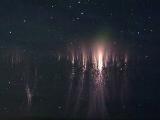
|
12/12/2023
The origin of ghosts, a type of atmospheric transient luminous event, revealed Ghosts (or GHOSTs) are part of a family of events that, although related to thunderstorms, occur in the mesosphere, tens of kilometres above the clouds. The Institute of Astrophysics of Andalusia (IAA-CSIC) leads the first spectroscopic study of these infrequent and brief phenomena, which associates them with unexpected compounds, such as iron and nickel |
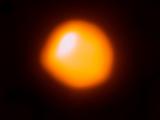
|
05/12/2023
On the night of 11-12 December, the star Betelgeuse will disappear... for a few seconds At around 2:15 in the early hours of 12 December, the asteroid Leona will pass in front of the red supergiant star Betelgeuse, a very unusual event that will be visible to the naked eye. The Institute of Astrophysics of Andalusia (IAA-CSIC) has organised a campaign to observe the phenomenon, which will make it possible to study both the asteroid and the star's atmosphere |
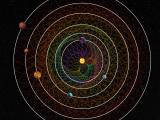
|
29/11/2023
A cosmic dance reveals a system of six planets The Institute of Astrophysics of Andalusia (IAA-CSIC) participates in the discovery of a sixfold system with synchronised orbits, whose configuration shows that it has remained unchanged since its formation more than a billion years ago. The result has been possible thanks to an international collaboration with data from the CHEOPS (ESA) and TESS (NASA) satellites, as well as from the CARMENES instrument at Calar Alto Observatory |

|
23/11/2023
The IAA-CSIC prepares for groundbreaking climate research from space The CAIRT mission, in whose scientific design the Institute of Astrophysics of Andalusia (IAA-CSIC) has participated, is among the two proposals selected by the European Space Agency (ESA) to move on to Phase A of the Earth Explorer 11 programme. CAIRT aims to study how the Earth's atmosphere reacts to climate change |
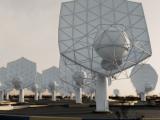
|
21/11/2023
The IAA-CSIC tackles the computational challenge of the SKA Observatory to study the birth of the first stars Together with two other CSIC centres, it has contributed its experience in big data to tackle one of the remains of the future observatory, which will investigate the phase of the Universe in which stars were formed. The SKA Observatory, the largest scientific infrastructure planned to date, is an international effort to build the world's most powerful radio telescopes |

|
13/11/2023
Granada hosts an international meeting to address the problem of light pollution as part of the Spanish presidency of the EU The Institute of Astrophysics of Andalusia (IAA-CSIC), through its Sky Quality Office, organizes this meeting in collaboration with the Spanish Light Pollution Network. The event will bring together more than fifty light pollution experts from different European countries in Granada |
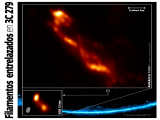
|
26/10/2023
Space interferometry observations reveal helical filaments inside a supermassive black hole's jet stream The Instituto de Astrofísica de Andalucía (IAA-CSIC) leads the observation with the highest resolution and sensitivity of the jet of material emerging from the nucleus of galaxy 3C 279 at almost the speed of light. |
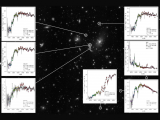
|
18/10/2023
J-PAS: largest mapping of the cosmos begins It will observe hundreds of millions of galaxies from the Javalambre Astrophysical Observatory in order to understand the accelerating expansion of the Universe. |
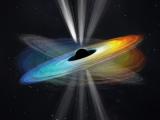
|
27/09/2023
Two decades of observing galaxy M87 show an oscillating jet connected to a rotating black hole The Institute of Astrophysics of Andalusia (IAA-CSIC) participates in the 23-year follow-up of the central supermassive black hole of the galaxy M87. The study reveals that the jet emerging from the centre oscillates, which in turn provides the first evidence of rotation of a supermassive black hole |
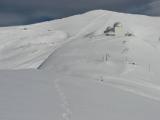
|
11/09/2023
The UGR and the IAA-CSIC join forces to collaborate in climate and ecological research in the high mountains of Sierra Nevada The University of Granada and the Spanish National Research Council (CSIC), through the Institute of Astrophysics of Andalusia (IAA-CSIC), have formalised an agreement with the aim of strengthening cooperation in the field of climate and ecological research in Sierra Nevada |
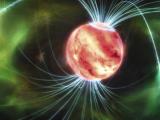
|
05/09/2023
The first detailed image of a radiation belt outside the Solar System is obtained It has been detected around a brown dwarf, a type of cold, low-mass substar. Published in Science, the image evokes the well-known belts of the Earth and Jupiter and reveals a magnetic field ten times greater than that of Jupiter, as well as intense polar auroras |
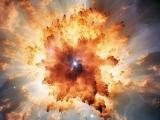
|
01/09/2023
NIRS3: the protostar that shows how giant stars grow The Institute of Astrophysics of Andalusia (IAA-CSIC) leads the sharpest analysis of this forming massive protostar, suggesting that it alternates recurrent episodes of accretion and ejection of material |
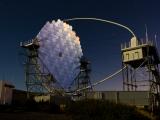
|
02/08/2023
Observations of the Crab Nebula confirm the outstanding performance of the first LST telescope at the CTA Observatory With more than sixty telescopes located in both hemispheres, the CTA Observatory will be the leading gamma-ray observatory for the next decades. The Institute of Astrophysics of Andalusia (IAA-CSIC) participates in the project and in the article on the performance of the LST-1 telescope, a milestone in the project |
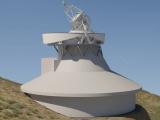
|
25/07/2023
The IAA-CSIC and the IAC participate in the creation of the European Solar Telescope Canary Foundation Nine institutions from seven European countries have today signed the deeds of this entity, which paves the way for the future construction of the European Solar Telescope (EST). One of the main goals of EST is to improve our understanding of the Sun by observing its magnetic fields in unprecedented detail |

|
28/06/2023
Emissions of several oceanic compounds cool the climate, but do not offset warming The Institute of Astrophysics of Andalusia (IAA-CSIC) is participating in a study that highlights the influence of a series of compounds emitted by the ocean on the Earth's climate. The scientific team, which stresses that this effect does not counteract the warming produced by human emissions, emphasises the need to include it in climate models to improve their predictions |
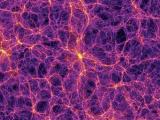
|
28/06/2023
Galaxies in the great cosmic voids grow more slowly than the rest of the universe The IAA-CSIC participates in a study that shows for the first time observationally that galaxies in the sparsely populated regions of the universe evolve more slowly than those in highly populated areas. The result is part of the CAVITY project, led by the University of Granada and developed at Calar Alto Observatory (CAHA) |

|
14/06/2023
The exoplanet LP 890-9 c, a laboratory to distinguish distant twins of Venus and Earth The Institute of Astrophysics of Andalusia (IAA-CSIC) participates in the development of a 3D global climate model of the extrasolar planet LP 890-9 c. These models are essential to analyze exoplanets similar to Earth, as well as to study their evolution |

|
07/06/2023
The Spanish Foundation for Science and Technology (FECYT) grants the IAA-CSIC funding for four outreach projects The Institute of Astrophysics of Andalusia (IAA-CSIC) obtains a total of 122,000 euros in the Call for the promotion of Scientific, Technological and Innovation Culture 2022. The projects are committed to innovative and multidisciplinary formats, and include video, theater, improvisation and street outreach proposals |
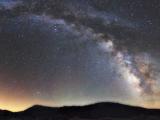
|
31/05/2023
The sky of the Granada Geopark, threatened by light pollution A study, developed by the Sky Quality Office of the Institute of Astrophysics of Andalusia (IAA-CSIC), reveals a deterioration of the Geopark sky, as well as the need to implement measures to preserve night darkness |
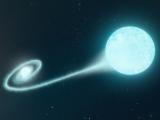
|
17/05/2023
The first radio detection of a type Ia supernova sheds light, after decades of debate, on the origin of these explosions These bursts, which show a similar luminosity in almost all cases, are used to measure distances in the universe or to study dark energy. The study, in which the Institute de Astrophysics de Andalusia (IAA-CSIC) participates, shows that the explosion occurred in a double star system in which a white dwarf stole material from its solar-type companion |
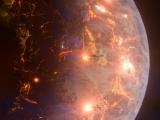
|
17/05/2023
A terrestrial-type planet found that could be covered with volcanoes The Institute of Astrophysics of Andalusia (IAA-CSIC) is participating in the discovery of a third planet around the nearby star LP791-18. Slightly larger than our own, its gravitational interaction with the most massive planet in the system could generate intense volcanic activity |
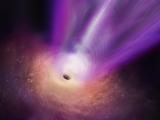
|
26/04/2023
Astronomers image for the first time a black hole’s shadow together with a powerful jet The Institute of Astrophysics of Andalusia (IAA-CSIC) participates in obtaining an unprecedented panoramic view, which shows for the first time the black hole and the jet of matter that emerges from it. The data reveals that the black hole in the galaxy M87, the first to be imaged, consumes matter at a very low rate. |
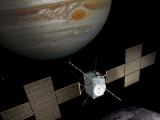
|
11/04/2023
JUICE mission takes off to Jupiter JUICE, the European Space Agency (ESA) mission to study the icy moons of Jupiter, will be launched tomorrow 13 April from the Kourou Spaceport (French Guiana). The Institute of Astrophysics of Andalusia (IAA-CSIC) is participating in two of the mission's instruments, the GALA laser altimeter and the JANUS camera |
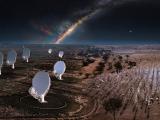
|
05/04/2023
Spain joins the SKA Observatory to participate in the construction of the largest radioastronomy facility on the planet The Spanish contribution to the project, which amounts to 41.4 million euros until 2030, will allow Spanish companies to participate in contracts of high technological value for the construction of this scientific infrastructure. The Institute de Astrophysics de Andalusia (IAA-CSIC) is responsible for the technical coordination of the Spanish participation in the project |
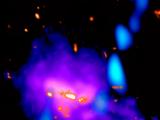
|
30/03/2023
Cosmic stream found that shows how galaxies form The Institute de Astrophysics de Andalusia (IAA-CSIC) is participating in the discovery of a gas stream feeding a distant, massive galaxy, which points to the existence of a large-scale material supply network in the universe |
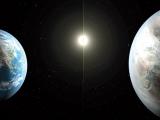
|
22/03/2023
A new planetary system composed of a super-Earth and a mini-Neptune, key to understanding how planets form The Institute of Astrophysics of Andalusia (IAA-CSIC) leads the discovery of TOI-2096, a unique planetary system |

|
16/03/2023
The visit to the IAA-CSIC of its External Scientific Advisory Board (ESAB) is over On March 14 and 16, the External Scientific Advisory Board (ESAB), composed of internationally recognized researchers, visited the IAA-CSIC facilities to review the activities of the IAA and to provide advice on future actions. |

|
14/03/2023
Climate change will increase forest fires caused by thunderstorm lightning strikes The Institute of Astrophysics of Andalusia (IAA-CSIC) is leading a study that concludes that lightning could increase by 40% before the end of this century. The study points to a large increase in forest fires in the Mediterranean basin, as well as in the central and west coast of North America |
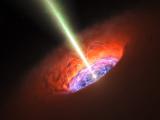
|
07/03/2023
The brightest and most distant quasars, both young and old, show powerful galactic winds The Institute de Astrophysics de Andalusia (IAA-CSIC) leads the study of twenty-two very luminous and distant quasars that completes our knowledge of the diversity of these objects |
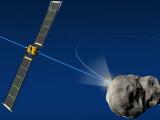
|
01/03/2023
The impact of the DART mission excavated more than five million kilos of material from the asteroid Dimorphos The Institute of Astrophysics of Andalusia (IAA-CSIC) is participating in the study of the material ejected by the impact, which altered the asteroid's orbit around its companion Didymos and produced a crater. The slower material was pushed in an anti-solar direction (almost opposite to the impact) by solar radiation pressure to form a tail, and the faster material showed complex interactions with the asteroid pair |
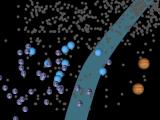
|
22/02/2023
CARMENES instrument multiplies the number of known planets in the solar neighborhood Twenty thousand observations of CARMENES, obtained from the 3.5-meter telescope of the Calar Alto Observatory (CAHA) are made public. The instrument, co-developed by the Institute of Astrophysics of Andalusia (IAA-CSIC), has made it possible to discover 59 planets, some of them in the habitable zone |

|
14/02/2023
The IAA-CSIC completes the first network of robotic telescopes present on the five continents Spain becomes the first country in the world to lead a global network of autonomous observatories. The BOOTES network, with seven facilities, is a pioneer in space surveillance and the study of transient cosmic phenomena, which shine briefly, intensely and suddenly. |
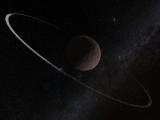
|
08/02/2023
The trans-Neptunian object Quaoar shows a ring that questions a theory used since 1850 The Institute of Astrophysics of Andalusia (IAA-CSIC) participates in the discovery of a dense ring in this object that, with a size equivalent to half of Pluto, raises several problems |